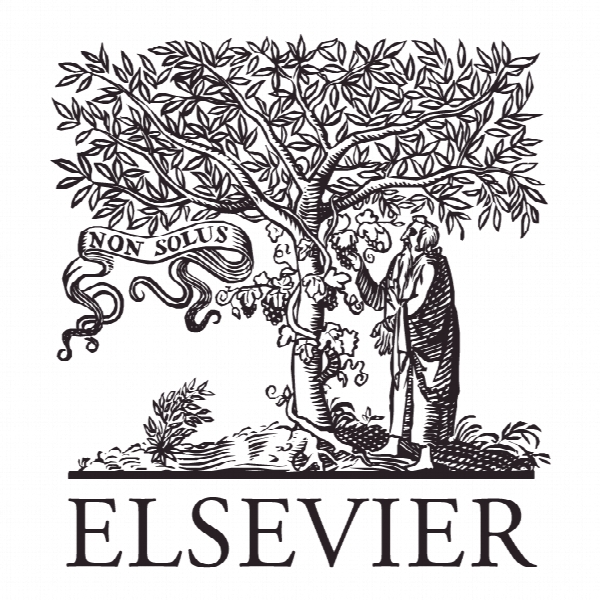اینترنت اشیا در بهداشت و درمان: یک بررسی اجمالی The internet of things in healthcare: An overview
- نوع فایل : کتاب
- زبان : انگلیسی
- ناشر : Elsevier
- چاپ و سال / کشور: 2018
توضیحات
رشته های مرتبط مهندسی فناوری اطلاعات، پزشکی
گرایش های مرتبط اینترنت و شبکه های گسترده
مجله ادغام اطلاعات صنعتی – Journal of Industrial Information Integration
دانشگاه Research instituteof robotics School of ME Huashan Road 1954 Shanghai Cocos (Keeling) Islands
منتشر شده در نشریه الزویر
کلمات کلیدی انگلیسی Internet of things, Healthcare system, Smart rehabilitation and literature review
گرایش های مرتبط اینترنت و شبکه های گسترده
مجله ادغام اطلاعات صنعتی – Journal of Industrial Information Integration
دانشگاه Research instituteof robotics School of ME Huashan Road 1954 Shanghai Cocos (Keeling) Islands
منتشر شده در نشریه الزویر
کلمات کلیدی انگلیسی Internet of things, Healthcare system, Smart rehabilitation and literature review
Description
1 1. Introduction The growing rate of the aging population has brought about many challenges in healthcare service. For example, the service of after stroke rehabilitation for the elderly is an emerging chal lenge, which requires a long-time commitment of medical and 6 human resources [1]. Medical rehabilitation is a relatively new sub7 ject, which was introduced in the middle of the 20th century, and 8 has been treated as a new branch of therapy aiming at alleviat9 ing or curing physical or mental dysfunctions by remedying or re-constructing disabilities. It has been recognized as an effective 11 means in improving physical functions of many types of patients. However, the promotion of medical rehabilitation to a wider scope of applications faces a few obstacles. Firstly, the majority of re14 habilitation treatment needs long-term and intensive therapy. Sec15 ondly, additional assistive facilities are required to provide patients with easy access to rehabilitation service. Thirdly, the availability 17 of rehabilitation resources is becoming relatively scarcer due to the 18 faster increasing pool of the aging population in current society. One promising method to alleviate the aforementioned prob20 lems is to adopt the Internet of Things (IoT) technologies and in21 telligentize the medical service systems. In recent years, applying Internet-based technologies for rehabilitation services has become popular after introducing some new concepts, such as Smarter Planet and Smart City [2]. The concept of “Smarter Planet” was proposed by the International Business Machines Corp. (IBM) in ∗ Tel.: +It was initially introduced to deal with the needs of real-time sensing, effective information exchange, the reduction of energy consumption, and the increase of productivity and efficiency of the 28 company [3]. Following the idea of ‘Smarter Planet’, a similar con- 29 cept of ‘Smart City’ was introduced and has attracted considerable 30 attention. For example, many cities in China have regarded build- ing an IoT-based smarter city as their long-term strategic plans [4]. IoT allows a pervasive connectivity, i.e., public facilities and re- sources in cities are seamlessly networked. In this way, pervasive 34 interactions exist among things, humans, or both. In IoT, radio fre- 35 quency identification tags (RFID), sensors, and personal digital as- 36 sistants (PDAs) are made ubiquitous in order to acquire real-time 37 data and support decision-making activities. With the smart per- 38 ception within an IoT, smart cities are capable of improving the performance of public services and business infrastructure in the ways that real-time data can be collected and analyzed promptly, abrupt and emergent events can be acknowledged and responded timely, and resources in the cities can be managed and controlled 43 appropriately. As far as the healthcare services, such as medical rehabilitation, are concerned, an IoT-based system makes it possi- ble to provide ‘one stop’ service to the residents conveniently even 46 at remote locations. In contrast to conventional on-site rehabilita- tion service at local hospitals, all the related resources are shared 48 within communities through smart rehabilitation to provide flexi- ble and convenient treatment to patients. In this way, the utiliza- tion of rehabilitation resources can be maximized [5,6], and it can 51 be anticipated that the IoT-based intelligent technology would be- come an irreplaceable tool in modern healthcare systems. Numerous progresses have been made in healthcare monitor- 54ing and control [14], interoperability and security [15], pervasive 5 healthcare [9,10], and drug interaction checking [11], etc. These achievements have demonstrated the effectiveness and promising 58 future of IoT-based healthcare system. Despite the existent suc59 cess, ambiguity and technical challenge still exist with regard to the question of how to rapidly and systematically establish as well as deploy an intelligent IoT-based healthcare system that involves big data management.


